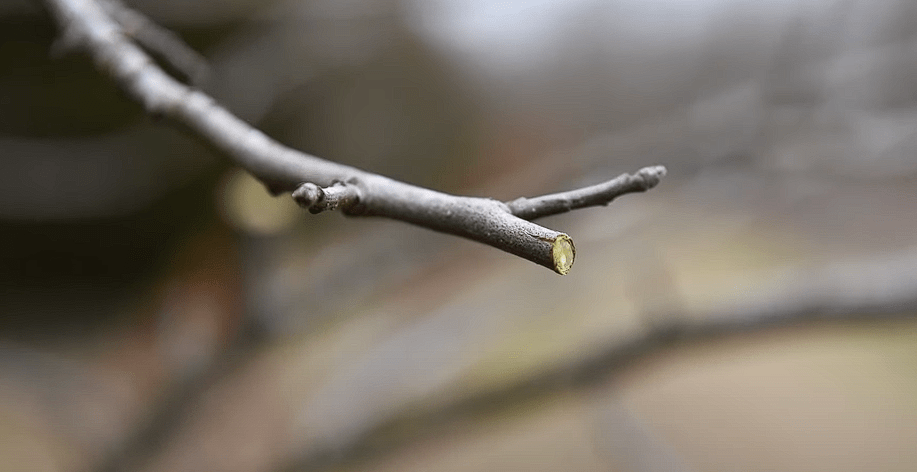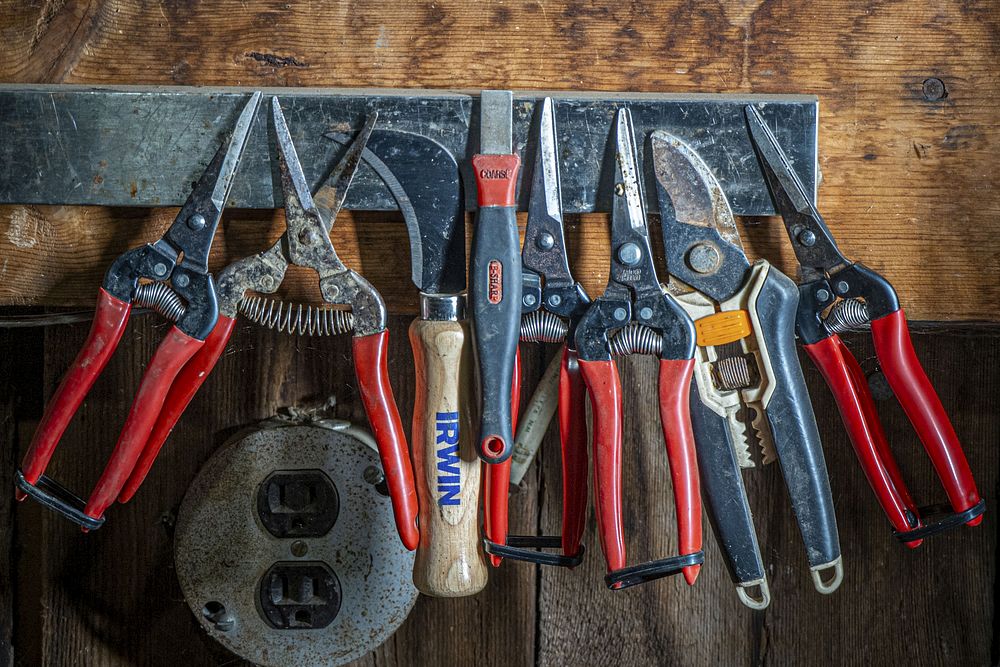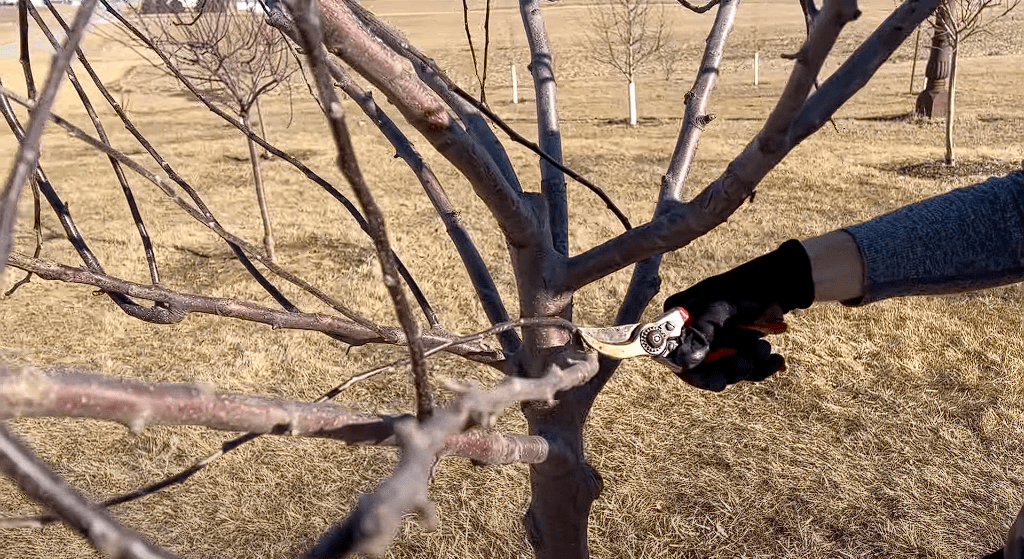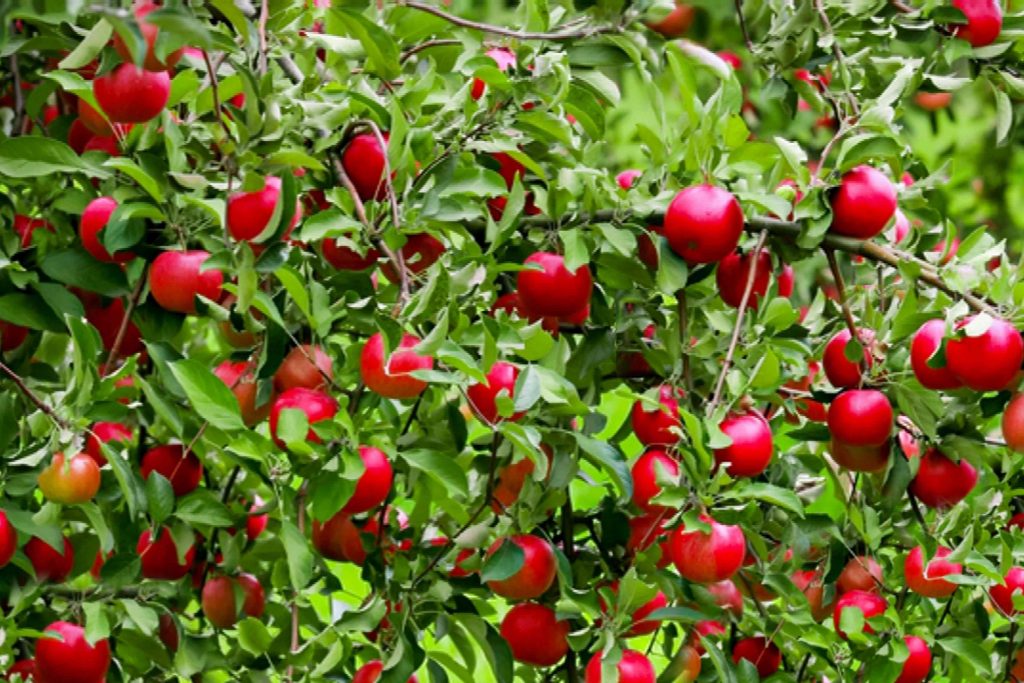Topic: Prune Fruit Trees in Spring
Prune fruit trees in spring to promote healthy growth and maximize fruit production. Spring pruning helps remove dead or damaged branches, shape the tree, and encourage the development of new fruiting wood.
Pruning also improves air circulation and sunlight penetration, reducing the risk of diseases and increasing fruit quality. With proper pruning techniques, you can maintain the size and shape of the tree, control its vigor, and stimulate the growth of fruiting buds.
This article will guide you on how to prune fruit trees in spring to ensure their overall health and productivity. Follow these simple steps to achieve optimal results and enjoy a bountiful harvest.
The Benefits And Importance Of Pruning Fruit Trees In Spring
Pruning fruit trees in spring helps promote healthier growth, increase fruit production, and prevent disease. This seasonal maintenance ensures trees receive adequate sunlight and airflow, leading to better quality fruits when harvesting time arrives.
Increased Fruit Production And Quality
- Pruning fruit trees in spring has numerous benefits when it comes to enhancing the production and quality of the fruit.
- By removing excess branches and foliage, the tree’s energy is focused on producing a higher quantity of fruit that is more vibrant and flavorful.
- Pruning promotes better air circulation and sunlight exposure to the remaining fruit, which decreases the likelihood of diseases and pests affecting the crop.
- The removal of dead, diseased, or damaged branches also helps prevent the spread of infections, ensuring the overall health of the tree and the fruits it bears.
Improves Tree Structure And Aesthetics
- Spring pruning plays a vital role in shaping the tree’s structure, encouraging it to grow in a desirable manner.
- By selectively removing branches, the tree’s form becomes more balanced and aesthetically pleasing. This contributes to the overall visual appeal of the garden or orchard.
- Proper pruning techniques help create a strong framework for the tree, improving its stability and resistance to adverse weather conditions such as wind and heavy fruit loads.
- A well-maintained tree with a good structure also makes it easier for fruit picking, thinning, and other maintenance activities in the future.
Disease Prevention And Pest Control
- One of the key reasons for pruning fruit trees in spring is to minimize the risk of diseases and pests.
- Pruning opens up the canopy, allowing better airflow throughout the tree. This reduces the chances of fungal infections, such as apple scab or peach leaf curl, as well as other diseases caused by moisture buildup.
- Removing old, diseased, or infested branches helps eliminate potential hiding places and breeding grounds for pests like aphids, mites, or codling moths.
- Regular pruning also facilitates the inspection and early detection of any signs of disease or infestation, enabling prompt treatment and minimizing damage to the tree and its fruits.
By understanding the benefits and importance of pruning fruit trees in spring, you can ensure healthier, more productive trees that yield delicious and visually appealing fruits. Incorporating this practice into your gardening routine will contribute to the overall success and beauty of your fruit tree orchard or backyard garden.
Remember to use proper pruning techniques and tools, and consult with an expert if needed, to maximize the results and longevity of your fruit trees.

Understanding The Optimal Timing For Pruning Fruit Trees
Pruning fruit trees in spring is crucial for optimal growth and fruit production. This timing allows for proper healing and reduces the risk of disease, ensuring healthy and fruitful trees.
When it comes to successfully pruning your fruit trees, timing is everything. Pruning at the right time can promote healthy growth, increase fruit production, and shape the tree’s overall structure. Understanding the optimal timing for pruning depends on various factors such as tree type, climate, and growth stage.
Factors To Consider: Tree Type, Climate, And Growth Stage
When deciding when to prune your fruit trees, it’s important to take into account the following factors:
- Tree type: Different fruit trees have different pruning requirements. Understanding the specific needs of your tree type will help you determine the best time to prune. Some common fruit trees that are commonly pruned in spring include apple trees, pear trees, cherry trees, and peach trees.
- Climate: The climate in your region plays a crucial role in determining when to prune your fruit trees. Pruning in spring is generally recommended for most fruit trees as it allows for healing before the new growth season. However, if you live in an area with extremely cold winters, it might be best to delay pruning until closer to the end of winter to minimize potential frost damage.
- Growth stage: Pruning fruit trees at the right growth stage can have a significant impact on their overall health and productivity. It’s important to assess the growth stage of your fruit tree before pruning. Early spring, when the tree is still dormant, is an ideal time for major structural pruning. Later in spring, once the tree has started to develop buds, you can focus on more detailed pruning such as thinning out branches and removing any damaged or diseased wood.
Commonly Pruned Fruit Trees In Spring
In spring, several fruit trees benefit from pruning to promote optimal growth and fruit production. Some commonly pruned fruit trees during this season include:
- Apple trees: Pruning apple trees in spring helps maintain a balanced shape, improve air circulation, and enhance sunlight penetration, resulting in better fruit quality and reduced risk of diseases.
- Pear trees: Pruning pear trees in spring allows for the removal of competing branches, encourages fruiting wood development, and prevents disease by improving air circulation.
- Cherry trees: Pruning cherry trees in spring helps open up the canopy, increasing light and air circulation, which promotes fruit ripening and minimizes the risk of fungal diseases.
- Peach trees: Pruning peach trees in spring focuses on removing dead wood, thinning out excessive branches to allow sunlight penetration, and improving overall fruit quality.
Best Practices For Timing Pruning
To ensure the best results when pruning fruit trees in spring, it’s recommended to adhere to these best practices:
- Start pruning before the tree breaks dormancy, ideally during late winter or early spring.
- Avoid pruning during freezing temperatures or when the tree is already producing new growth, as this can cause stress and potential damage.
- Use sharp and clean pruning tools to make clean cuts, preventing the spread of diseases.
- Prioritize removing diseased, dead, and damaged wood first, followed by thinning out excessive branches and shaping the tree as needed.
- Always step back and assess the tree’s overall shape and structure while pruning, aiming for an open canopy that allows sunlight penetration.
- Finish pruning before buds burst and new growth begins, as this ensures proper healing and reduces the risk of infections.
By understanding the optimal timing for pruning fruit trees and considering factors such as tree type, climate, and growth stage, you can provide your fruit trees with the care they need to thrive. Remember to follow best practices and enjoy the benefits of healthy, productive fruit trees.

Necessary Equipment For Successful Tree Pruning
Equip yourself with the necessary tools for successful fruit tree pruning in spring. With the right equipment, you can ensure healthy growth and abundant harvests.
Spring is the perfect time to prune fruit trees and ensure a bountiful harvest later in the season. To successfully prune your trees, it’s important to have the right equipment on hand. Proper tools make the task easier and help you achieve clean and precise cuts.
Here are the necessary tools you’ll need for successful tree pruning:
Pruning Shears And Loppers:
- Pruning shears: These handheld tools are ideal for trimming small branches and twigs up to ¾ inch in diameter. They offer precision and control, making them essential for accurate cuts.
- Loppers: Designed for trimming larger branches, loppers have long handles and powerful blades. They can cut through branches up to 2 inches thick, allowing you to tackle thicker growth with ease.
Hand Saw Or Pruning Saw:
- Hand saw: A hand saw is useful for cutting through thicker branches that are out of reach for pruning shears or loppers. Look for a saw with a curved blade for efficient cutting and a comfortable grip for extended use.
- Pruning saw: Similar to a hand saw, a pruning saw is specifically designed for cutting tree branches. It features a narrow and curved blade that easily fits into tight spaces, ensuring precise and effortless cuts.
Pole Pruner For Taller Trees:
- Pole pruner: When dealing with taller trees, a pole pruner is indispensable. It consists of a pruning saw or lopper attached to an extended pole, allowing you to reach branches at greater heights. Opt for a pole pruner with an adjustable length for versatility.
Clean And Sharp Tools For Precision Cuts:
- Clean tools: Before pruning your fruit trees, it’s crucial to clean your tools to prevent the spread of diseases. Use a disinfectant to sanitize the blades, removing any debris or residue.
- Sharp tools: Dull blades can cause ragged and uneven cuts, making it difficult for the tree to heal properly. Ensure your pruning shears, loppers, hand saw, and pruning saw have sharp blades for clean and precise pruning cuts.
Having the right equipment for tree pruning is essential for maintaining the health and appearance of your fruit trees. Remember to clean and sharpen your tools regularly and use each tool for its intended purpose. With proper equipment and techniques, your fruit trees will thrive and yield an abundant harvest in the coming months. So gear up and get ready to prune your fruit trees to perfection this spring!
Step-By-Step Guide To Prune Fruit Trees In Spring
Learn how to effectively prune fruit trees in spring with this step-by-step guide. Discover the best techniques to promote healthy growth, maximize fruit production, and maintain the overall shape of your trees.
Step-By-Step Guide To Prune Fruit Trees In Spring:
Assessing the tree’s overall health and structure:
- Begin by observing the tree’s overall health and appearance, looking for signs of disease or weak branches.
- Assess the tree’s structure, checking for any crossing or rubbing branches that may hinder healthy growth.
- Look for branches that are growing vertically or creating a dense canopy, as these can inhibit airflow and increase the risk of disease.
Identifying and removing dead or damaged branches:
- Start by identifying dead or damaged branches, which are often dry, brittle, or discolored.
- Use sharp pruning shears or a pruning saw to carefully remove these branches, making clean cuts near the branch collar.
- Removing dead or damaged branches helps improve the tree’s overall health and appearance.
Selective pruning for proper spacing and airflow:
- Identify branches that are growing too closely together and causing overcrowding.
- Choose the strongest and healthiest branches to keep and carefully prune away the rest.
- This selective pruning allows for proper spacing between branches, enhancing airflow and reducing the risk of disease.
Thinning out crowded branches to improve fruit production:
- Thin out branches in areas where there is excessive growth or too many small branches clustered together.
- Remove smaller, weaker branches, allowing the remaining branches to receive adequate sunlight and nutrients.
- Thinning out crowded branches promotes better fruit production and helps maintain the tree’s overall health.
Pruning tips for specific fruit tree varieties:
- Apple trees: Prune apple trees in early spring before new growth begins. Focus on removing any water sprouts (upright, vigorous shoots) and branches that cross or rub against each other.
- Peach trees: Prune peach trees when they are dormant, before buds start to swell. Remove any dead or damaged branches, as well as branches that grow towards the tree’s center.
- Cherry trees: Prune cherry trees in late winter or early spring and avoid pruning during wet conditions to minimize the risk of disease. Remove any dead, diseased, or crossing branches.
Remember, proper pruning techniques and timing can vary for different fruit tree varieties. Consult specific resources or seek advice from a professional arborist for more detailed guidelines.
By following these step-by-step instructions, you can effectively prune your fruit trees in spring, promoting their health, structure, and fruit production. Happy pruning.

Best Practices For Making Clean And Precise Pruning Cuts
Learn the best practices for clean and precise pruning cuts when pruning fruit trees in spring. Ensure your cuts are clean and precise to promote proper growth and prevent damage to your trees. Prune fruit trees in spring: best practices for making clean and precise pruning cuts
Spring is the ideal time to prune fruit trees, as it promotes healthy growth and maximizes fruit production. When it comes to making clean and precise pruning cuts, following best practices is essential. Here, we will discuss the angle, location, and size of pruning cuts, avoiding common pruning mistakes that can harm the tree, and how to properly dispose of pruned branches and debris.
Angle, Location, And Size Of Pruning Cuts:
To ensure the tree’s health and vitality, proper pruning techniques are crucial. Here are some best practices to follow:
- Cutting angle: Make your pruning cuts at an angle that allows water to flow away from the bud. This prevents water accumulation, minimizing the risk of diseases and rotting.
- Cutting location: Position your pruning cuts just above a bud or branch collar. This encourages healthy growth and prevents any damage to the branch collar, which acts as a protective barrier against pathogens.
- Cutting size: It is important to remove the right amount of plant material with each cut. Avoid excessively large cuts, as they can invite pests and diseases. On the other hand, avoid removing too little, as it can hinder the tree’s growth.
Avoiding Common Pruning Mistakes That Can Harm The Tree:
Pruning mistakes can have detrimental effects on your fruit trees. Here are some common mistakes to avoid:
- Topping: Topping refers to removing the uppermost section of the tree. This practice weakens the tree, encourages water sprouts, and disrupts its natural growth pattern.
- Over-pruning: Excessive pruning can stress the tree and leave it vulnerable to infections and diseases. Avoid removing more than a quarter of the tree’s live branches in a single pruning season.
- Improper timing: Pruning at the wrong time, such as late in the growing season, can disrupt the tree’s growth cycle and reduce fruit production. Stick to pruning during the dormant season or early spring when the tree is still in its dormant phase.
How To Properly Dispose Of Pruned Branches And Debris:
Disposing of pruned branches and debris correctly is essential for maintaining a clean and healthy environment. Here’s what you should do:
- Composting: Create a compost pile designated for organic waste from your fruit trees. Pruned branches and debris can be chopped into smaller pieces and added to the compost pile. Over time, they will break down into nutrient-rich compost to enrich your garden soil.
- Mulching: Consider using pruned branches as mulch in your garden beds. Chipping the branches and spreading them around the tree’s base helps retain moisture, suppress weeds, and improve soil health.
- Yard waste pickup: Check with your local waste management services about yard waste pickup schedules and guidelines. Some municipalities have specific requirements for bundling or bagging pruned branches and debris.
Pruning fruit trees in the spring is an important task that requires attention to detail and adherence to best practices. By following the proper angle, location, and size of pruning cuts, avoiding common pruning mistakes, and responsibly disposing of pruned branches and debris, you can ensure the continued health and productivity of your fruit trees.
Additional Insights For Mastering The Art Of Tree Pruning
Master the art of tree pruning with additional insights specifically tailored for pruning fruit trees in the spring. Discover expert tips and techniques to ensure the optimal health and productivity of your fruit trees.
Pruning fruit trees in spring is a critical task for maintaining their health and productivity. In addition to the basic techniques of tree pruning, there are several additional insights that can help you master the art of pruning fruit trees effectively.
Let’s explore some of these insights in more detail:
Using Pruning Sealants Or Not: Pros And Cons
- Pruning sealants, such as tree wound dressings or sealers, have been traditionally used to cover pruning cuts, with the belief that they promote faster healing and prevent disease. However, studies have shown that using sealants may actually hinder the tree’s natural healing process.
- By not using pruning sealants, you allow the tree to naturally form a protective callus over the pruning cut. This callus helps prevent pests and diseases from entering and promotes faster healing.
- It is important to note that there may be certain cases where using a pruning sealant is necessary, such as when pruning large branches or in areas where disease is prevalent. In such cases, consult with an arborist or horticulturist for guidance.
Applying Dormant Oil Sprays For Pest Prevention
- Dormant oil sprays are a valuable tool for pest prevention in fruit trees during their dormant period, before bud break in spring. These oils suffocate overwintering insects and their eggs, reducing pest populations.
- When applying dormant oil sprays, it is important to follow the instructions provided by the manufacturer. Ensure thorough coverage of all the tree’s surfaces, including branches, trunk, and buds. Be mindful of environmental conditions and avoid spraying during windy or freezing conditions.
- It is advisable to apply dormant oil sprays when the temperature is above freezing but below 60°f (15°c) to maximize their effectiveness in controlling pests.
Promoting Strong Regrowth And Future Fruiting
- Pruning fruit trees in spring allows for the removal of dead, damaged, or crossing branches, which improves air circulation and sunlight penetration. This, in turn, promotes strong regrowth and future fruiting.
- When pruning, aim to create an open-centered or modified central leader shape, depending on the fruit tree type. This helps maintain a balance between vegetative growth and fruit production.
- Take care not to over-prune, as this can lead to excessive vegetative growth at the expense of fruit production. Prune selectively and prioritize the removal of unproductive branches.
Pruning Fruit Trees In Pots Or Containers: Special Considerations
- Pruning fruit trees in pots or containers requires additional considerations compared to trees in the ground. These considerations include size management, root pruning, and maintaining a balanced root-to-shoot ratio.
- Regular pruning is essential to control the size and shape of fruit trees in pots. Limiting the tree’s size ensures it remains manageable and allows for easy movement if needed.
- Root pruning should be done periodically to prevent the tree from becoming root-bound. Carefully remove a portion of the root ball and trim the roots before repotting in fresh soil.
- Maintaining a balanced root-to-shoot ratio is crucial for the overall health and vigor of potted fruit trees. Prune the canopy in proportion to the root system, ensuring a healthy balance.
By considering these additional insights, you can enhance your tree pruning skills and promote the optimal growth and fruit production of your fruit trees. Remember to adapt your approach based on the specific needs of each fruit tree variety and consult with experts when necessary.
Happy pruning!
Top Related Topics –
- When to Prune Fruit Trees – 4 Significant Times for Optimal Results
- How to Prune Fruit Trees in Winter – 10 Easy Steps To Follow
- When to Prune Fruit Trees Zone 6 – A Quick And Easy Guide For 18 Most Common Fruit Trees
- Optimal Timing for Pruning Fruit Trees in California for Enhancing Growth
- 10 Steps of Pruning Apple Trees With Diagram – A Guide to Enhancing Growth and Harvest
- When to Prune Apple Trees – 10 Significant Tips For Apple Tree Care and Maintenance
Frequently Asked Questions For Prune Fruit Trees In Spring
Q: How Do You Prune Fruit Trees In Spring?
A: Pruning fruit trees in spring is important for their overall health and productivity. Start by removing dead, damaged, or diseased branches. Then, thin out any crowded areas to improve air circulation and light penetration. Finally, cut back vigorous branches to promote new growth and maintain a balanced shape.
Q: When Is The Best Time To Prune Fruit Trees In Spring?
A: The optimal time to prune fruit trees in spring is before the buds break but when the frost risk has passed. This typically falls between late winter to early spring when the tree is still dormant. Avoid pruning too late in the season as it may result in weaker growth and fruit production.
Q: What Are The Benefits Of Pruning Fruit Trees In Spring?
A: Pruning fruit trees in spring offers numerous benefits. It helps remove dead or diseased branches, stimulates new growth and fruit production, promotes proper airflow and sunlight exposure, and maintains the tree’s shape and size. Additionally, it allows for easier pest and disease management, making your fruit trees healthier and more productive.
Q: Can I Prune Fruit Trees In Spring If They Have Already Bloomed?
A: It’s ideal to prune fruit trees before they bloom, but if they have already bloomed, be cautious with pruning to avoid reducing the potential fruit yield for the current season. Focus on removing dead and damaged branches and only perform light pruning to maintain the tree’s shape and remove any unwanted growth.
Q: What Tools Do I Need For Pruning Fruit Trees In Spring?
A: To prune fruit trees in spring, you’ll need a few essential tools. These include sharp hand pruners for smaller branches, loppers for thicker branches, a pruning saw for larger cuts, and possibly a pole pruner for reaching higher branches. Ensure that your tools are clean and well-maintained to achieve clean and precise cuts.
Q: Can I Prune Fruit Trees In Spring If They Are Still Young?
A: Yes, you can prune young fruit trees in spring. Pruning encourages strong branch development and helps shape the tree for better growth and future fruit production. Focus on removing any competing branches and maintaining a central leader or desired shape. However, avoid heavy pruning, as young trees need their foliage to generate energy for growth.
Conclusion
Pruning fruit trees in spring is a crucial task for maintaining their health, productivity, and aesthetics. By following the proper techniques and timing, you can remove dead or diseased branches to prevent the spread of pests and diseases. Pruning also allows for better air circulation and sunlight penetration, leading to improved fruit quality.
Additionally, shaping and thinning the tree can stimulate new growth and promote better fruit production in the long run. Remember, each tree has its unique needs, so understanding your specific tree’s requirements is essential. Whether you’re a novice or an experienced gardener, taking the time to prune your fruit trees in spring will undoubtedly yield beneficial results.
So grab your pruners and get ready to give your fruit trees the care they deserve! Happy pruning!
Topic Covered: prune fruit trees in spring, trimming fruit trees in spring, prune apple trees in spring or fall, prune apple trees in spring, pruning plum trees in spring, can you prune fruit trees in spring, prune fruit trees in fall or spring, pruning espalier apple trees in spring, can you prune apple trees in spring


